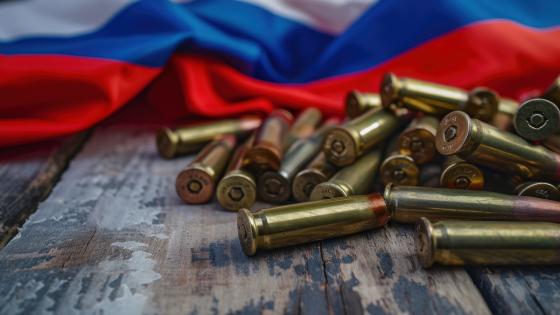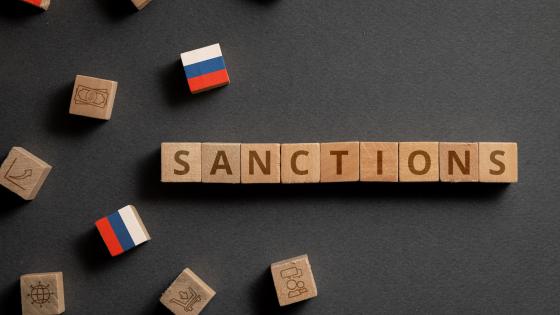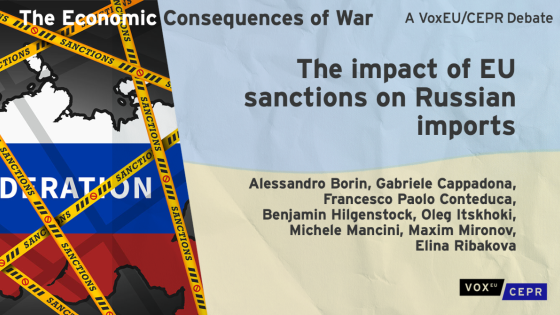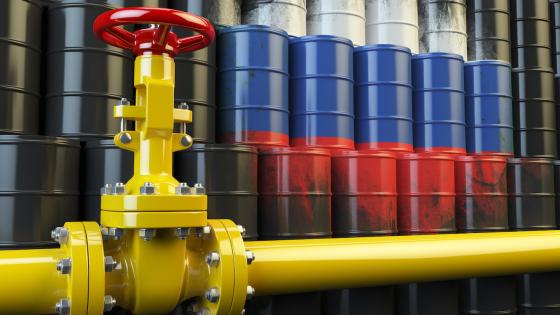Russian economy on war footing
Immediately after Russia’s invasion of Ukraine in February 2022, economic activity contracted by 4.4 % (see Figure 1) and the country was close to a financial crisis as households queued to withdraw cash from banks. The ruble lost more than 40% of its external value in a matter of few days. A swift interest rate hike to 20% and the introduction of capital controls stabilised the situation in the financial markets, and the overall economy started to recover. Recovery was boosted by increase in public spending, first in construction and later in military procurement. Housing construction also benefited from large subsidies.
Figure 1 Russia’s quarterly GDP, seasonally adjusted
Source: Rosstat
Production in the war-related industries is up some 60% in the spring 2024 in comparison to autumn 2022, when it started to grow at breakneck speed. At the same time, production in other sectors of manufacturing is flat. Figure 2 shows change in the value-added of economic sectors from 2021 to 2023. Value-added has increased significantly in public administration (including the military), construction (including housing and infrastructure investment in the Russian Far East to serve the Chinese market) and in manufacturing (in war-related subsectors such as manufacture of fabricated metals and “other vehicles”). Sanctions have affected production, but Russia has had access to enough components, even if at higher prices and at the cost of civilian production, to keep its military production running.
The geographical structure of production and incomes has changed too. Regions with manufacturing in war-related industries have benefited, and so have poorer regions that have sent many men to the frontlines. For example, Solanko (2024) documents how households deposits have grown faster in the regions where military recruitment has been more widespread.
While higher public spending has underpinned much of the growth in recorded GDP, Russia’s federal government deficits have remained relatively small, at approximately 2% of GDP in 2022 and 2023. Revenues from, for example, oil taxes have remained high despite the oil embargo and the oil price cap imposed on Russian oil countries by coalition of countries against Russia’s war on Ukraine
In short, available data show that the Russian economy is progressively becoming militarised. Economic activity is dominated by increased government spending and supported by high revenues from energy exports. The structure of the economy has changed as more and more resources have been poured into waging the war. Some sectors and some regions have been winners in Russia’s new war-oriented economy. This is especially true for some of Russia’s poorest regions, where the war has offered many people upward social mobility that was not available in the preceding decades of Russia’s reintegration into global economy. At the same time, the economy is approximately at full capacity so that further increases in military production will likely to be met with high inflation or further decreases of the civilian economy. Moreover, uneven growth across sectors and regions due to exploding military spending creates distortions not only for the current economy but also for future dynamics.
Economic sanctions
Russia has been under sanctions since 2014 when Russia illegally annexed Crimea and sent its troops to the Donbas. Full-scale invasion triggered many rounds of sanctions from the EU countries, the US, the UK and many other allies. In a surprise move, Western countries froze the international assets of the Bank of Russia that were invested in their jurisdictions on 24 February 2022. Hilgenstock et al. (2024) estimate that these frozen assets were worth some $300 billion. On 21 May 2024, the EU decided to use the proceeds (around €3 billion) from these frozen funds to support Ukraine.
Economic sanctions constrained the Russian government in its ability to wage war, but the implementation and design of sanctions blunted their effectiveness. For example, restrictions were incomplete and phased in gradually. Some Russian banks continue to have access to SWIFT, a bank messaging system. Europe’s deadline for stopping import of Russian oil was in December 2022 rather than February 2022 and the oil price cap neutralised some of the effects of the EU embargo, which originally included an embargo on the provision of services for Russian seaborn oil.
These deficiencies gave the Russian government ample space to find workarounds and exploit loopholes. For instance, as no decision had been made to stop trade with Russia and Europe remained dependent on Russian energy, it was necessary to leave certain channels for cross-border transactions open. Gazprombank, one of Russia’s largest banks, and Raiffeisen Bank, a large Austrian bank, are exempted from sanctions. Not surprisingly, the Russian financial system has been able to adapt.
Have sanctions failed? No. They have achieved what they could considering their limited nature, a macroeconomic environment supportive to Russia for an extended period, authorities’ preparations in recent years and their policy response, as well as support for Russia from countries outside of the sanctions coalition.
At the same time, Russia’s ability to finance the war critically depends on energy exports and thus remains vulnerable to future sanctions. Furthermore, the Russian economy continues to rely heavily on Western technology, a potential choke point. Finally, secondary sanctions can significantly tighten the screw and therefore inhibit Russia’s economic and military capabilities.
Outlook
Using growth accounting, we contemplate several scenarios for long-term growth of the Russian economy (Table 1). We note that labour is not a likely source of economic growth for Russia for the foreseeable future. The negative demographic trends would be hard to overcome unless there is a radical change in the country. Productivity growth is always a big unknown, but for Russia it seems unlikely to be a major source either. The exodus of high-human-capital workers, increasing government intervention, international isolation, and poor protection of property rights are just some of the factors that weigh on productivity growth. Capital accumulation appears to be the only realistic engine. But this can critically depend on Russia’s ability to finance and direct investment. One can anticipate that Russia will be largely excluded from global capital markets and thus the country will have to rely on internal, mostly government sources to cover investment spending. Furthermore, given the increasing role of the government in the economy and specifically its militarisation, one may predict that capital for civilian production might stagnate or even fall. Upside scenarios rely on high oil prices. The balance of risks is such that one can hardly be optimistic about the long-term outlook for the Russian economy. Our results suggest that long-run economic growth for Russia will be less than 1% per year.
Table 1 Growth accounting
Notes: authors’ calculations. The table reports growth rates in percent per year. Actuals are from Penn World Tables.
Next steps
What can affect the future course of the Russian economy? Clearly, the military and economic decisions of the Russian government play a central role. Oil prices are another key factor. Finally, we have the pressure of the global community on Russia to stop the aggression. While the first two forces are beyond the direct control of Western democracies, the third force is certainly within their powers. Hence, we conclude with a few reflections on the matter.
We find that sanctions as a key element of the economic statecraft toolbox can be effective when they have clear and limited objectives, are targeted in nature, hard to avoid, and measured against their objectives and adjusted if needed. Sanctions are therefore most effective when they are not imposed “slowly or incrementally as they may simply strengthen the target government” (Hufbauer 2009). At this point, a comprehensive cost-benefit analysis of sanctions is critically important.
At the same time, some elements of future sanctions are increasingly clear. First, the focus should be on energy exports that fuel the Russian war machine. It is impossible to undermine the macroeconomic stability of a commodity-exporting country in times of soaring commodity prices if no decisive measures are taken to restrict export volumes. Second, Russia’s integration into the world economy and the continued support to Russia from countries such as China requires a more innovative approach, in particular to deal with circumvention schemes. Third, private sector entities need to be empowered and incentivised to play a role in tracking transactions and controlling supply chains. In effect, a new era of sanctions also requires a new era of corporate responsibility.
Finally, we believe that a more structured approach has to be brought to the design and implementation of sanctions. We need a coherent way to connect tools and objectives across disciplines, possibly through a structured model-driven approach (e.g. Itskhoki and Mukhin 2022, Ghironi et al. 2023).
References
Ghironi, F, D Kim and G Ozhan (2024) "International Trade and Macroeconomic Dynamics with Sanctions," NBER Working Paper 32188.
Gorodnichenko, Y, I Korhonen and E Ribakova (2024), “Russian economy on war footing: A new reality financed by commodity exports”, CEPR Policy Insight No. 131.
Hilgenstock, B, E Ribakova, A Vlasyuk and G Wolff (2024), “Using the Financial System to Enforce Export Controls”, Bruegel.
Itskhoki, O and D Mukhin (2022), “Sanctions and the exchange rate”, VoxEU.org, 16 May.
Simola, H (2022), “War and sanctions: Effects on the Russian economy”, VoxEU.org 15 December.
Solanko, L (2024), “Where do Russia’s mobilized soldiers come from? Evidence from bank deposits”, BOFIT Policy Brief 1/2024.









